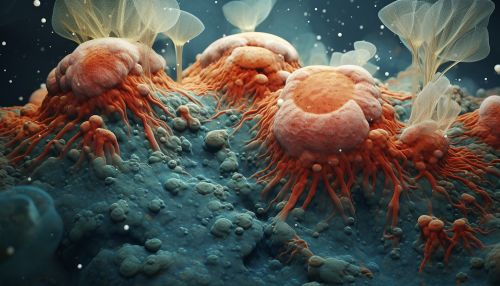Archaea
Introduction
Archaea Archaea are a diverse group of prokaryotic microorganisms that are distinct from bacteria and eukaryotes. They are part of the three-domain system of life, which classifies all known living organisms into three broad categories: Bacteria, Archaea, and Eukarya. Archaea were initially classified as bacteria, but this was later revised when it was discovered that they have unique properties that separate them from bacteria and eukaryotes.
Characteristics of Archaea
Archaea are characterized by their ability to thrive in extreme environments, such as high temperature, high salinity, and low pH levels. They have unique biochemical and metabolic characteristics, and their cell walls do not contain peptidoglycan, a substance found in the cell walls of bacteria. Instead, their cell walls are composed of pseudopeptidoglycan or other polymers. Archaea also have unique membrane lipids, which differ from those found in bacteria and eukaryotes.
Classification of Archaea
The classification of Archaea is complex and has undergone several revisions. Currently, Archaea are classified into several phyla, including Euryarchaeota, Crenarchaeota, Korarchaeota, Thaumarchaeota, and Nanoarchaeota, among others. These phyla are further divided into classes, orders, families, genera, and species.
Metabolism of Archaea
Archaea exhibit a wide range of metabolic pathways. Some are autotrophs, producing their own food from inorganic substances, while others are heterotrophs, obtaining their food from organic substances. Some Archaea are capable of methanogenesis, a unique form of metabolism that involves the production of methane as a byproduct.
Ecology of Archaea
Archaea are found in a wide range of environments, from the human gut to the deep sea. They play important roles in various ecological processes, such as the carbon cycle and the nitrogen cycle. Some Archaea are also known to form symbiotic relationships with other organisms.
Evolution of Archaea
The evolution of Archaea is a topic of ongoing research. It is believed that Archaea and eukaryotes share a common ancestor, a theory supported by the fact that Archaea and eukaryotes share several key genetic features.
Archaea and Human Health
While most Archaea are harmless to humans, some have been implicated in human diseases. For example, certain species of methanogenic Archaea have been associated with periodontal disease and other oral infections.
Conclusion
Archaea are a fascinating group of organisms that have unique characteristics and play important roles in various ecological processes. Despite their importance, many aspects of their biology and ecology remain poorly understood, and further research is needed to fully understand these intriguing organisms.


